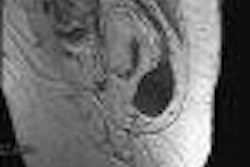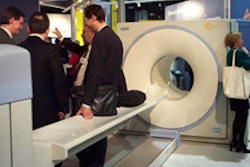Men who undergo prostate brachytherapy are unlikely to cause radiation damage to their spouses, family members, or even pets. According to a scientific poster presentation at the RSNA conference last month, a family living in Denver, CO would be exposed to more radiation.
"We can now tell a woman: ‘The amount of radiation you will get from your husband in one year is less that you would get from living in Denver for three or four months’,"said Dr. Jeff Michalski, assistant professor of radiology at Washington University School of Medicine in St. Louis.
Because Denver is more than 5,000 feet above sea level and has a thinner atmosphere, people who live in the city are exposed to more natural radiation.
About 38,000 men undergo prostate brachytherapy with either iodine-125 or palladium-103 and the survival rate appears to be equivalent to the surgery, Michalski said.
"But there are a lot of family members who are concerned about the radiation," said Dr. Feng Ming Kong, a radiology resident at Washington University. "They want to know: ‘Can I hold my granddaughter on my lap? Is it okay to visit my pregnant daughter?’"
To answer those questions, Michalski and colleagues recruited 40 patients undergoing permanent prostate brachytherapy for the study: 27 received iodine-125 implants and 13 received palladium-103 implants.
Each patient was asked to wear two radiation film badges - one at the collar and the other on the waist for 24 hours over a three-week period. They also were given badges to place around the home in areas such as a favorite chair, the bedroom night table, the kitchen, and bathroom.
Spouses and other family members in the household were asked to wear a single badge on his or her body whenever they were with the patient, including at bedtime. In some cases pet dogs wore the badges.
"Patients requested the badges for their pets," Michalski said. "A couple of the tags worn by dogs were unreadable, due to the fact that they had been chewed up by the animals." Michalski said there was no documentation for effects on household cats because "cats refused to be tagged."
At a dosimetry post-implant scan, all but 14 patients returned the badges. Patients with iodine-125 implants handed in 281 badges and those with palladium-103 implants returned 128 badges.
The results were extrapolated to determine what the exposure would be over the course of a year.
For the group with iodine-125, spouses received an average of 14 millirems, other family members received less than 8 mrem, and radiation exposure in rooms measured less than 5 mrem.
For the patients with palladium-103 implants, spouses received an average of 6 mrem, while other family members and the house itself received an exposure that was below the 1 mrem detection threshold of the badge, the group reported.
Michalski said that no one knows what the threshold is for radiation damage, but that the background radiation that each person is exposed to through natural sources averages around 300 millirems a year in the U.S.
"The reality is that you can lead a normal life. You don’t have to put the patient in the basement and keep him away from other people," commented Dr. Hedvig Hricak, chairman of radiology at Memorial Sloan-Kettering Cancer Center in New York.
Kong said the half-life of iodine-125 is 60 days, and the half-life for palladium-103 is 17 days. Michalski said that by the end of the one year, 98% of the iodine and 99.9% of palladium's radioactivity has been expended.
By Edward SusmanAuntMinnie.com contributing writer
December 26, 2000
Related Reading
Use of high-dose-rate afterloading brachytherapy in prostate cancer is rising, November 27, 2000
Syncor announces first U.S. I-125 seed user, July 26, 2000
Click here to post your comments about this story. Please include the headline of the article in your message.
Copyright © 2000 AuntMinnie.com



















